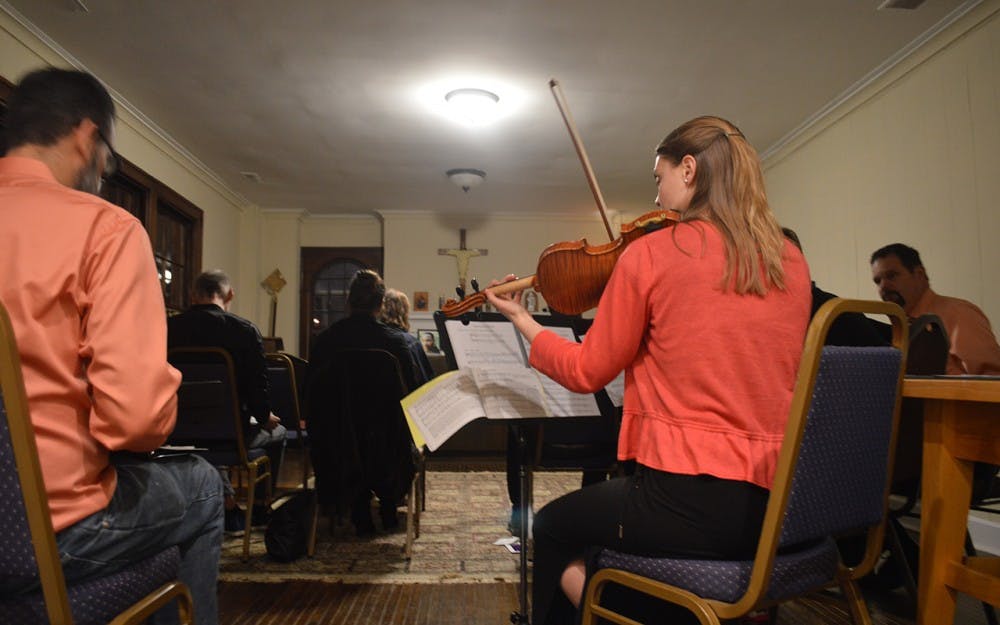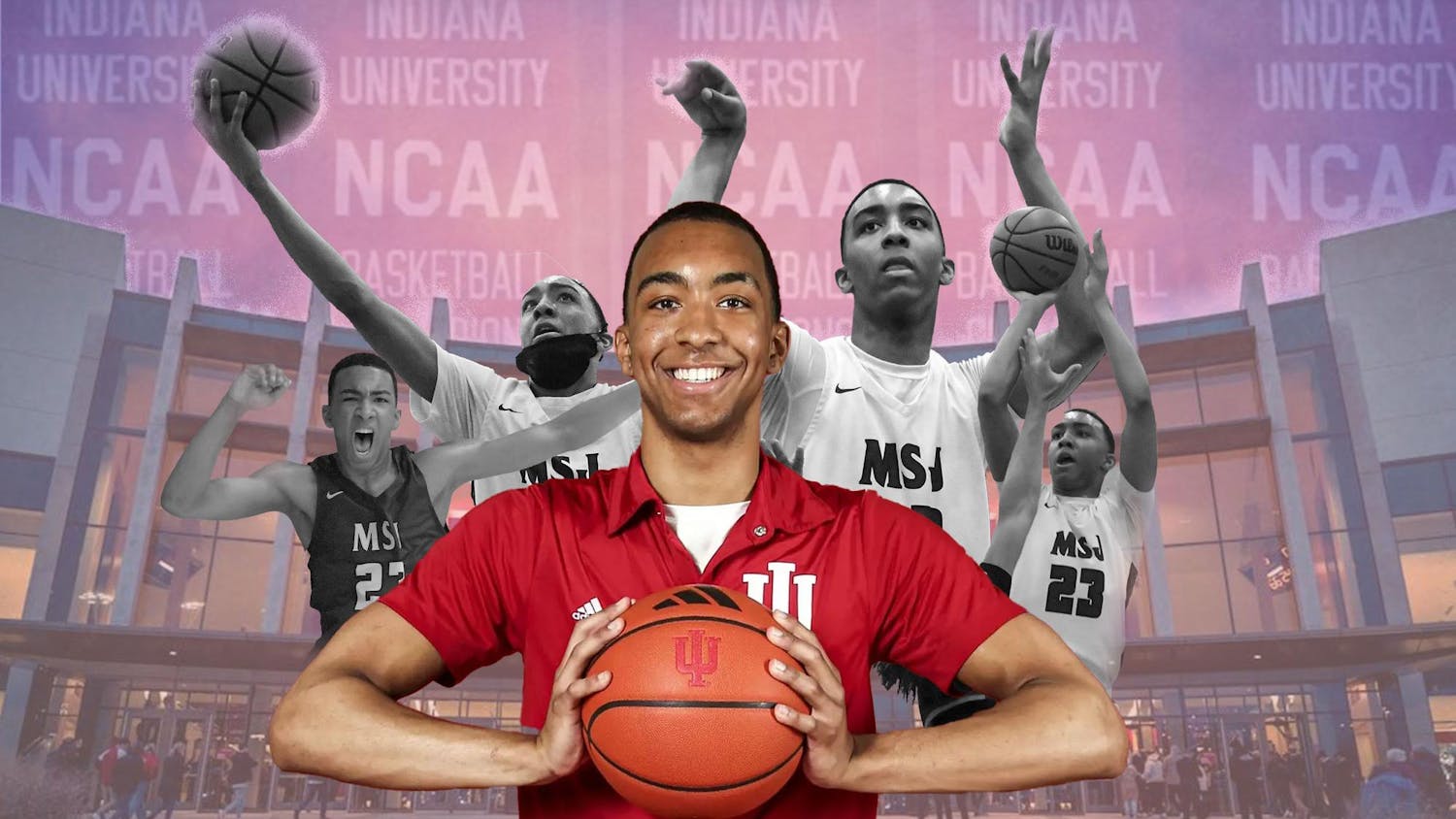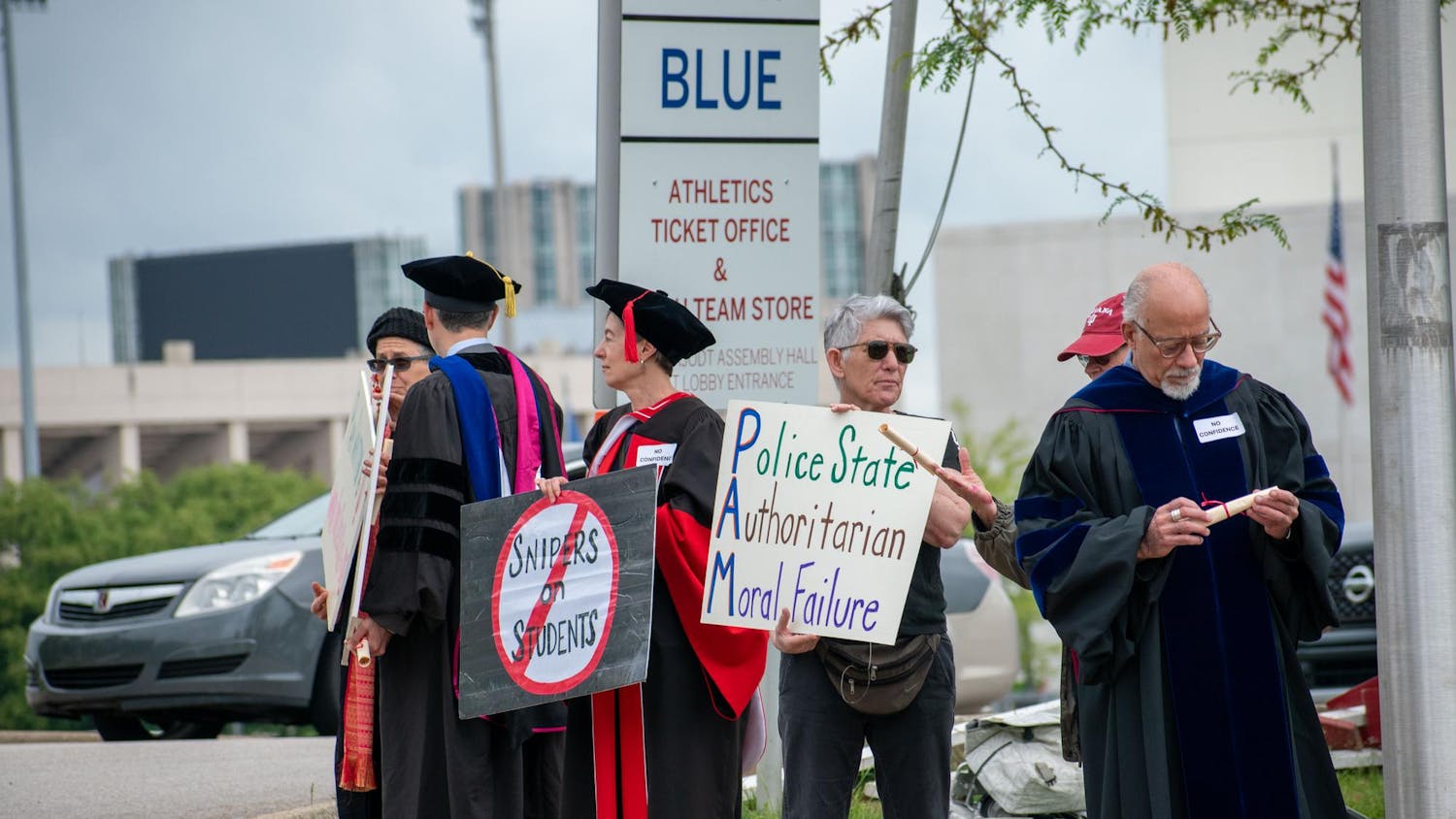Candlelight flickered on the white walls of the living room chapel at the Canterbury House on Tuesday night where a Jesus statue hung on the cross. About 13 people gathered for the Episcopal Campus Ministry’s Taizé service in the low-lit room to sing and pray together, as well as to honor Black History Month.
“Nothing can trouble, nothing can frighten,” those in attendance sang together.
The services come from a community in France that was created in the 1940s when a group of monks, following Brother Roger Schütz, gathered in Taizé, Mother Linda Johnson said.
The services emphasize unity and peace, event organizer Luiz Lopes said.
Seats were set up to face the front of the room where pictures of Martin Luther King Jr., Archbishop Desmond Tutu and Jennifer Baskerville-Burrows, the Bishop-Elect of the Diocese of Indianapolis and the first black woman to be elected as a diocesan bishop, were set up on a table. Yellow booklets with Taizé songs, as well as purple slips detailing the agenda were handed out to those who gathered for the service.
Taizé services have become very common on college campuses, Johnson said.
They are more meditative than other religious services, Rex Hinkle, the Cantor for Episcopal Campus Ministry said.
“People are searching,” she said. “People are searching for some sort of peace and connection that’s not electronic.”
Johnson said she has been to the chapel in Taizé, France, that became part of the underground movement to transfer Jews from France to Switzerland during World War II. She talked about how the chapel was set up on a hill and how 5,000 people would gather there in profound silence to pray in all different languages.
“It’s a sign of hope,” she said.
Lopes emphasized that the service was interfaith, open to all faiths and denominations. Though this service in particular had more readings from the Christian faith, he said the goal of future services will be to incorporate texts and readings from other faiths.
“It’s both an asset and a liability because some people don’t want to branch out of their sandbox,” Lopes said.
Different from typical religious ceremonies, the service was leaderless on Tuesday night. Taizé songs were the main aspect of the service, though readings of poems by Langston Hughes and a reading of a sermon by Absalom Jones, the first black priest of the Episcopal church, were also featured. A song by Margaret Bonds, one of the first recognized black composers in the United States, was also sung.
In between songs, the room was silent while people prayed. Lopes described the service as being very personal, focusing on the music and readings, so each person gets something different out of it.
“It’s a time to reflect on the day, reflect on God,” Hinkle said.
Hinkle, in his position as cantor, helps to lead songs during the Sunday afternoon services at the Canterbury House. However, Lopes was in charge tonight. Throughout the service, he encouraged the musicians and singers in the back of the room with head nods and thumbs up.
Future Taizé services will be held at the Canterbury House on March 8, April 13 and May 3.






